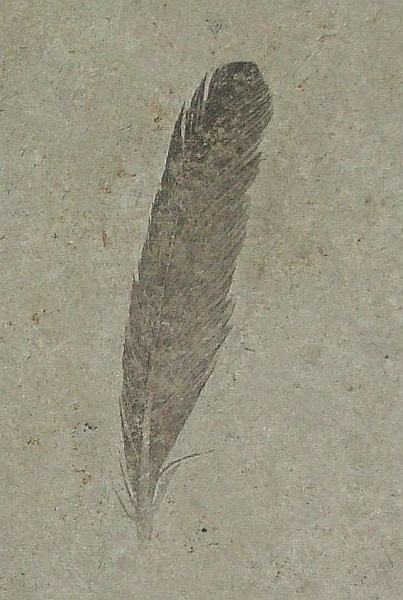This feather is 150 million years old, give or take a millenia.
Found in Solnhofen, Germany and documented by Hermann von Meyer in 1861, the Urvogel Feather (“Original Bird” Feather) caused a sensation for several reasons:
- It was the first and oldest single feather fossil ever found.
- It was paired and described with the first feathered dinosaur, Archaeopteryx lithographica, a species that displayed characteristics of both dinosaurs and birds.
- It was discovered only two years after Charles Darwin published The Origin of Species and was hailed as evidence of evolution.
Feather fossils are rarely found because they must form in finely grained material in an anoxic environment.
Back in the Jurassic period when the Urvogel feather fell from an Archaopteryx’s wing, Bavaria was a group of tropical islands. The feather landed on water — probably still attached to the dead dinosaur — and eventually settled to the bottom in a “dead zone” where the lack of oxygen prevented it from decomposing.
The sediment became limestone so finely grained that it led to the invention of lithography in 1796. These quarries produce high quality stones for print-making and uncover many fossils.
Eventually 11 fossils were identified as Archaeopteryx, a raven-sized feathered dinosaur shaped like a magpie. In 2011 scanning electron microscopy revealed that some of its feathers were black.
Naturally “Archy” has generated a lot of discussion over the years — from analyses placing him in the trajectory of dinosaurs to birds, to arguments denouncing evolution that said his fossils were fake. (Those arguments were easily debunked because their authors misunderstood geology.)
150 million years since it died, 150 years since it surfaced, the Urvogel Feather has made a lasting impression.
(photo taken at Museum für Naturkunde in Berlin where the Urvogel Feather was on display for its 150th anniversary. Click on the image to see the original on Wikimedia Commons)
